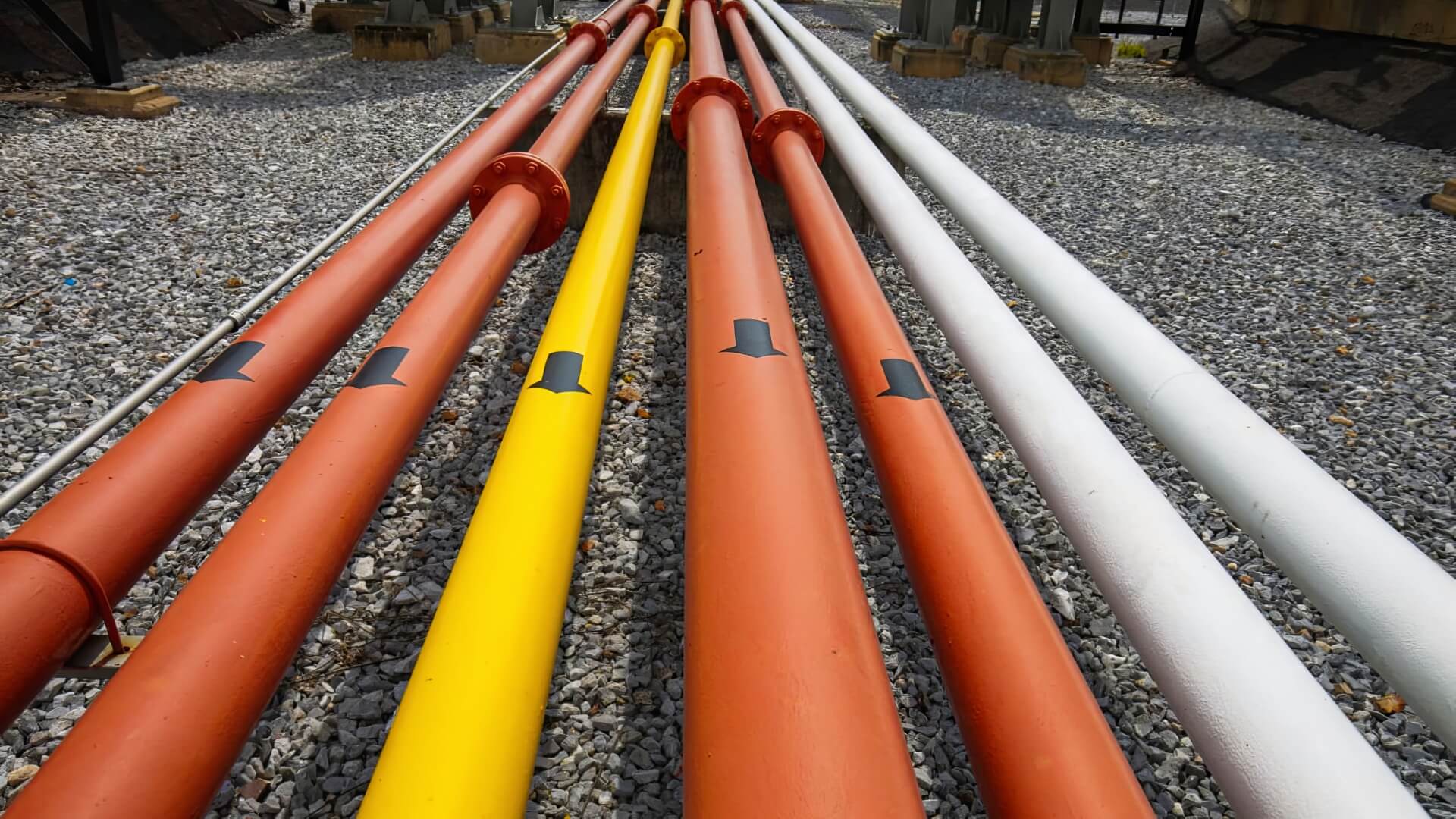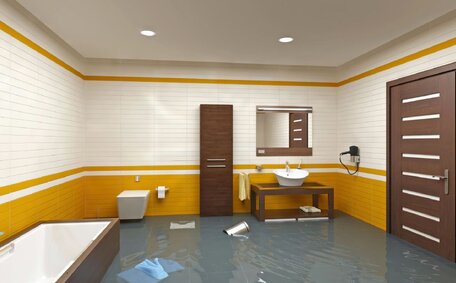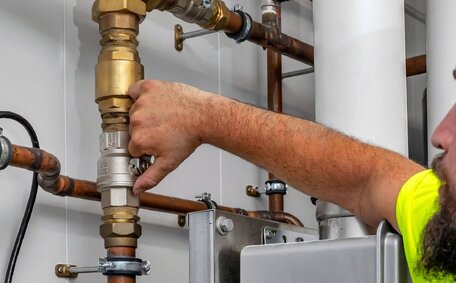Introduction to Noisy Toilet Flushes
A regularly noisy toilet indicates underlying issues. Sounds like gurgling, squealing, or banging during flushing indicate issues that need addressing.
At Moorebank Plumbing, we’re experts at diagnosing and resolving noisy toilet and water heater concerns. Our decade of experience equips us with expertise to resolve various plumbing problems, including post-flush noise.
This article delves into the origins of common toilet noises, the various sounds and their meanings, and provides actionable advice for troubleshooting and silencing a noisy toilet flush.
We’ll explore recurrent issues such as defective flapper valves, misaligned components, obstructed vents causing post-flush noise, and high water pressure. You’ll learn DIY tips to try independently before needing professional assistance.
Continue reading for insights to quickly decode and resolve disturbing toilet sounds with solutions from our seasoned plumbers.
Common Causes of Noisy Toilet Flushes
- Faulty fill valve - If the fill valve or ballcock valve is worn out or misaligned, it may cause a hissing or squealing sound as water rushes into the tank.
- Water hammer - Sudden water pressure changes when the toilet is flushed can lead to banging noises in the pipes, known as water hammer.
- Flapper valve problems - A faulty flapper not sealing properly or getting stuck open can produce gurgling sounds as water continuously flows into your toilet bowl.
- Blocked vent stack - Without proper air ventilation, syphoning issues during flushing can cause gurgling noises.
- High water pressure - Excess water pressure entering the tank can result in loud splashing and hissing sounds.
Identifying the specific sound and timing aids in diagnosing and fixing the issue. Subsequently, adjust or replace the affected valves, flappers, water supply lines, and consider installing water hammer arrestors if necessary.
Hissing Noises
A hissing noise during flushing often arises from fill valve complications. When a fill valve, which regulates water flow into the tank post-flush, is faulty or misaligned, it can cause rapid water inflow.
If the toilet tank’s fill valve seal is cracked or worn, it allows water to enter hastily, creating a hissing noise. Sediment buildup under the seal can also cause hissing by preventing a tight seal.
High water pressure from the supply line can cause a splashing or hissing noise as water flows into the bottom of the tank.
The initial step to silence the noise is to inspect the fill valve seal after removing the toilet tank lid.
Check for cracks, deterioration, or the need to remove mineral deposits. Then, try cleaning the valve and seal before replacing any parts. You can also install an inline water pressure regulator to control the water flow via the fill valve toilet.
If the hissing continues after adjustments, it might be time to replace the fill valve and potentially call in a plumber. As this valve toilet part connects to the water supply, it’s best to hire a licensed plumber to ensure proper installation and water tightness.
Squealing or Whistling Noises
Squealing noises when using the toilet are often due to toilet fill valve issues. If sediment and mineral deposits accumulate under the seal over time, it can prevent the valve from closing properly.
This can result in a running toilet and an irritating high-pitched noise. The fill valve can become misaligned or bent, warping the seal and allowing water to squeeze through, which is why your toilet keeps making noise.
To troubleshoot, one can usually start by cleaning the top valve and seal, including the float cup, thoroughly to remove any stuck-on deposits.
Use a toothbrush with white vinegar or a lime remover to clean the fill valve. Rinse thoroughly after scrubbing. If warped, carefully bend it back to shape.
Try lowering the water pressure to the toilet by adjusting the shut-off valve. Diminish excess pressure gradually to prevent overwhelming an ageing fill valve, stopping when the squealing ceases.
Should these DIY actions not quieten the disturbance, it might be time to call professional for fill valve replacement. Because this valve connects to your water supply, contact Moorebank Plumbing to schedule a replacement.
Phantom Flushes
Phantom flushes often result from a faulty flush valve, indicated by random flushing noises without activation. This annoying phenomenon is typically caused by a faulty flapper valve that fails to seal the tank properly or gets stuck open.
A malfunctioning flapper allows a constant trickle of water to leak from the tank into the bowl. This creates the sound of phantom or ghost flushes at random intervals when you flush toilet.
Another factor for the clamour is likely because a misaligned refill tube perpetuates noise. If the end of this tube sits too low in the overflow pipe, extra water can syphon from the tank during refilling. This leads to partial, phantom-like flushes.
To troubleshoot, first check the chain connecting the flapper and flush handle. Make sure it has enough slack and isn’t holding the flapper open. Then inspect the flapper itself for warping, cracks or mineral buildup that are making noise after preventing a seal.
Also, ensure the refill tube is correctly positioned and directed into the overflow tube. The tube end should sit an inch below the pipe top; adjust the water level accordingly. Adjust or lower float arm and substitute other components as necessary.
Banging Noises
A sudden pressure drop occurs when the toilet flapper releases water into the bowl. This shockwave then ricochets through the pipes, resulting in a hammering noise when water rushes out post-flush. You might perceive the resonant clatter within moments which generally occurs after the flush concludes.
Your pipes may endure water hammer, typically happening when water pressure too intense, but a blocked vent stack can also contribute by disrupting air pressure cushioning within the drainage system.
To stop toilet banging, when use your easiest fix by installing a water hammer arrestor. This device mitigates hydraulic shock and quiets water hammer. Adjusting your main water pressure regulator can also help prevent the problem.
If noises persist, call our licenced plumbers at Moorebank Plumbing on 1300 349 338 to inspect your plumbing. We can diagnose the cause and specify parts needing repair or replacement to stop unwanted sounds.
Horn or Moaning Noises
If your plumbing system is emitting a sound akin to a loud foghorn noise when flushed, the likely culprit could be a partially closed water supply valve necessitating a thorough investigation.
The water supply valve connects to the fill valve inside the tank, which when opened fully, prevents loud noise by allowing water to flow smoothly into the tank to refill to the correct level after flushing.
However, if the supply valve gets bumped and partially turned off during a flushing toilet cycle, it restricts the water your toilet receives. So when the fill valve opens to refill, your water trying to squeeze through the narrowed opening makes a honking or moaning noise.
Begin troubleshooting by inspecting the water flow valve located behind or beneath your toilet. Make sure it’s fully counter-clockwise in the open position. Then proceed to turn water off to the toilet, flush, and observe if the noises cease.
If Adjusting the valve doesn’t resolve the issue, it’s time to flush the toilet and observe if sediments may be obstructing proper turn water supply flow.
Shut off the supply valve, disconnect the line, clear any debris, and then reconnect. Tighten all fittings securely.
Contact our team at Moorebank Plumbing on 1300 349 338 if you need further assistance diagnosing and fixing a noisy toilet flush.
Gurgling or Bubbling Noises
If you hear gurgling or bubbling sounds coming from the toilet, a likely cause is a blocked vent stack. All plumbing systems have vent stacks that allow air into the waste pipes. When water encounters clogged vents, it causes problems with water drainage.
When the actuation of flushing occurs and water cascades down, the void is eagerly filled by air, an exchange that can cause a cacophony of sounds. With blocked vents, bubbles and gurgles occur as air struggles to enter narrow pipes. Sewer gases can also froth up into the toilet basin, carrying with them a signature noise water patter.
A further probable concern that might unleash havoc in your lavatory is leaking or separated pipelines beneath, often accompanied by a hue and cry that may sound like a murmur. This allows sewer gases to leak out around fittings, again bubbling up into the bowl.
To address gurgling toilets, start by pouring hot water down the overflow pipe to clear any blockages inside. You can also try plunging the toilet to dislodge clogs. If noises continue, have our team at Moorebank Plumbing inspect for issues like blocked vents or faulty drainage connections. Call us on 1300 349 338.
How to Diagnose and Resolve Noisy Toilet Issues
Diagnosing toilet noises requires a systematic examination of components. Initiate your investigation by aiming to figure out when noises occur - during filling, flushing, or at random intervals. Recreate the sound by flushing normally while listening intently.
Check inside the tank first. Ensure the fill valve seal is intact.
Inspect the flapper, fill valve, refill tube, and float parts for issues. Confirm nothing is obstructing the flapper from sealing properly.
Also examine the water supply valve and shut off angle stops. Fully open valves if noise subsides when partially closed. Inspect where the tank and bowl join for leakage.
If noises happen during flushing, a likely culprit is water hammer from high pressure. Installing a water hammer arrester near the toilet can help cushion hydraulic shocks.
For persistent gurgling, plunging and hot water can clear vent blockages. Severe cases may require rodding or snaking drains. Leaking drainage pipes under the toilet can also cause bubbling requiring repair.
Many toilet component issues are fixable by DIY enthusiasts with basic skills. But for complex or chronic issues, contact our licenced technicians at Moorebank Plumbing on 1300 349 338 for reliable service.
When to Call a Professional Plumber
It’s time to call a professional plumber like Moorebank Plumbing when you’re pondering 'do i know how to fix a noisy toilet?' after attempting several DIY troubleshooting steps without success.
While minor toilet problems can often be fixed on your own, persisting or complex noises might signal reasons why your expert help is needed. Our licenced plumbers have the skills and equipment to thoroughly inspect your toilet and plumbing to pinpoint the root cause.
We can test components like flapper valves and fill valves for leaks and functionality to fix toilet issues effectively. We also check venting, drainage pipes in your home and assess water pressure for problems that DIYers may overlook. Years of experience allow us to quickly diagnose issues leading to gurgling, banging or phantom flushing.
We’ll advise if parts need adjustment, cleaning or replacement. For tricky vent blockages, we may rod drains to open airways. We can install water hammer arrestors to stop banging pipes.
Don’t struggle with an endlessly noisy toilet. Our plumbers take the hassle out of diagnosing and repairing toilet problems. Call Moorebank Plumbing on 1300 349 338 for prompt, reliable service.
Preventing Future Noisy Toilet Problems
Preventing future noisy toilet issues requires regular maintenance and monitoring your toilet’s performance. Here are key steps to help avoid problems:
- Conduct visual inspections of internal toilet parts like the flapper, fill valve, float and refill tube every 6 months. Replace ageing or mineral-coated parts.
- Check water pressure and use a regulator if higher than 80 PSI. Excess pressure strains components.
- Clean the tank and bowl regularly to prevent sediment buildup which can lead to poor seals and strange noises.
- Listen attentively to normal flushing sounds so new noises are quickly noticed.
- Fix minor leaks immediately and have drainage pipes inspected for issues preventing venting.
- If your pipes continue to bang, consider installing water hammer arrestors.
Proactive maintenance can prevent part failures. But should strange sounds occur, contact our team at Moorebank Plumbing on 1300 349 338 for prompt, reliable diagnosis and servicing.
With the help of our expert plumbers, you can keep your toilet quiet and working optimally for years to come.






